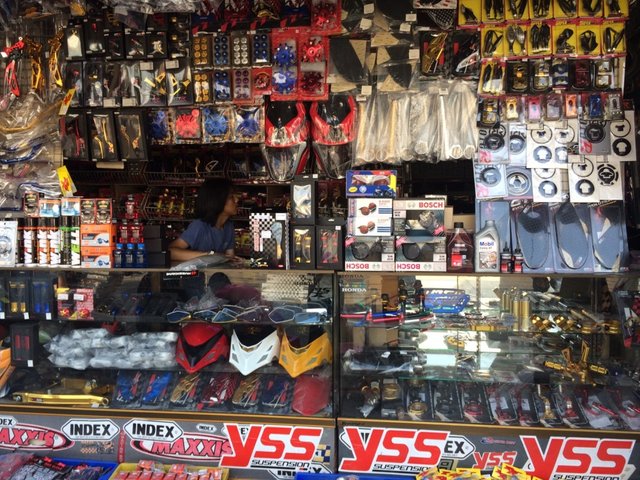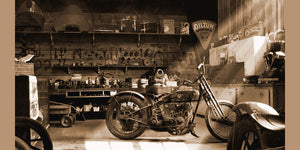Comprehending the Vital Parts of a Motorbike: A Comprehensive Overview for Enthusiasts
For bike fanatics looking to raise their riding experience and ensure their bikes run efficiently, recognizing the crucial elements of a bike is extremely important. Each element, from the engine's intricate functions to the vital duty of the stopping devices, not just influences performance but also safety and comfort.
Engine Elements

The camshaft plays a crucial duty in controlling the timing of the engine's shutoffs, guaranteeing the precise opening and closing essential for effective gas and air intake, along with exhaust expulsion. This timing is vital to keeping optimal engine efficiency and efficiency. Furthermore, the carburetor or gas injection system, depending upon the motorbike model, is accountable for blending air with gas in the appropriate proportion for combustion.
The cooling system, either air or liquid-based, works to preserve the engine's temperature level within operational limitations, protecting against overheating and making sure long life - motocross gear. Each part, diligently designed and integrated, adds to the smooth procedure of the engine, specifying the bike's power output and overall performance
Transmission System
Indispensable to the motorcycle's functionality, the transmission system guarantees effective power transfer from the engine to the wheels. This system comprises a number of critical parts, including the clutch, transmission, and last drive, each playing a vital role in equating the engine's power right into motion. The clutch, normally run by a hand lever, serves to disengage the engine and engage from the transmission, permitting smooth gear modifications and regulated acceleration.
The gearbox, frequently referred to as the transmission correct, consists of a set of gears that riders can manually change via to change the bike's speed and torque outcome. These gears are arranged in a series that makes it possible for the bike to speed up smoothly and keep optimum engine efficiency throughout various speeds. The majority of motorcycles make use of a sequential transmission, calling for the cyclist to change gears in an established order.
Braking Devices
While understanding the transmission system is key to harnessing a bike's power, similarly essential is the ability to regulate and stop that power effectively, which is where stopping devices enter play. Brakes are essential for safety and security and efficiency, supplying the biker with the essential control to navigate numerous surfaces and conditions. Typically, motorbikes feature 2 kinds of braking systems: disc brakes and drum brakes.
Disc brakes are a lot more widespread in modern motorbikes due to their exceptional efficiency. This system supplies better warm dissipation, regular performance, and improved quiting power, specifically in wet problems.
Conversely, drum brakes, though less common, are still discovered in some motorcycles. They work by pressing brake shoes versus the inner surface of a drum connected to the wheel. While normally much less effective in warm dissipation and quiting power, drum brakes are less complex and extra economical.
Understanding these braking systems' nuances allows bikers to keep their bikes properly and appreciate the engineering that makes sure secure and reliable quiting.
Suspension and Steering
Suspension and guiding systems are essential parts that considerably influence a motorbike's handling and trip comfort. The shock absorber, consisting of forks at the front and shock absorbers at the rear, takes in roadway irregularities, enhancing stability and control. Front forks, usually telescopic or upside down, compress and rebound to mitigate influences, while back shock absorbers maintain tire call with the roadway, Recommended Site important for traction and security.
Steering, centered around the handlebars, attaches the cyclist to the bike's directional control. The guiding head bearings make sure smooth operation, allowing accurate maneuverability. Proper alignment and upkeep of these bearings are important for predictable steering feedback and minimizing biker fatigue.
The suspension's adjustability is another critical facet; preload, damping, and rebound settings allow customization to match different riding designs and conditions. This flexibility is vital for optimizing efficiency, whether navigating urban streets or tackling sturdy routes. Technologies like electronic shock absorber use real-time modifications, boosting experience top quality throughout advice diverse surfaces.

Electrical Equipments
After guaranteeing a regulated and smooth ride with reliable suspension and guiding systems, interest turns to the electric systems, an essential facet of contemporary bikes. These systems play an important duty not only in beginning the engine but likewise in powering numerous parts that enhance the capability and safety of the motorcycle.
At the heart of a motorbike's electric system is the battery, which stores electric power essential for starting the engine and powering complementary systems - mx parts nz. The generator or generator, paired with the rectifier-regulator, makes certain the battery stays billed while the bike is in procedure, converting mechanical energy right into electric power and keeping voltage degrees
The ignition system, another important part, is in charge of igniting the air-fuel mixture in the engine's cylinders. Modern bikes usually make use of a digital ignition system, offering greater effectiveness and reliability compared to traditional systems.
Illumination systems, consisting of fronts lights, tail lights, and signs, are likewise crucial, ensuring presence and safety and security for the cyclist. Added electronic elements such as sensors, control devices, and presents add to innovative attributes like fuel injection monitoring, anti-lock stopping systems (ABS), and electronic control panels, additionally enhancing the riding experience.
Verdict
A thorough Read Full Report understanding of a motorcycle's important elements, consisting of the engine, transmission system, stopping mechanisms, suspension, guiding, and electrical systems, is indispensable for fanatics aiming to maximize performance, convenience, and safety. Proficiency of these elements permits notified choices concerning upkeep and upgrades, ultimately boosting the riding experience. By integrating this understanding, motorcyclists can ensure their bikes operate at peak effectiveness and integrity, thereby taking full advantage of both enjoyment and durability of their automobiles.
For bike enthusiasts looking to boost their riding experience and ensure their bikes run smoothly, comprehending the essential components of a bike is critical.Important to the bike's capability, the transmission system ensures reliable power transfer from the engine to the wheels.While understanding the transmission system is essential to taking advantage of a bike's power, equally vital is the capacity to regulate and quit that power effectively, which is where braking devices come right into play. Typically, motorcycles feature 2 types of braking systems: disc brakes and drum brakes.
A complete understanding of a motorcycle's vital elements, including the engine, transmission system, braking mechanisms, suspension, steering, and electrical systems, is important for lovers aiming to maximize safety, comfort, and performance.
Comments on “Check Out the most up to date Motocross Gear NZ for every single Degree of Rider”